Abstract
Pigeons were trained on a procedure in which the key was white for 30 sec, alternating with periods of darkness, or timeout. In a nondifferential training procedure, timeout duration was held constant at either 9 or 21 sec for different animals, and pecks on the white key were reinforced on a variable-interval 36-sec schedule. After 30 sessions an extinction generalization test was conducted where the duration of the timeout was varied from 3 to 27 sec. This test showed no differences in responding following timeouts of different durations. In a differential training procedure, timeout durations of either 9 or 21 sec were randomly scheduled for each animal. The variable-internal schedule was in effect following the same timeout duration as in the prior nondifferential procedure. No pecks were reinforced after the other timeout duration. In 40 sessions, differences in response rates following the two durations gradually developed. A maintained generalization procedure was then imposed in which timeout durations were varied from 3 to 27 sec, with the variable-interval schedule in effect following only the same duration as in the previous procedures. The first maintained generalization session showed that the prior differential training had established control of the animals' behavior by the timeout duration. In continued training on the maintained generalization procedure, control by the timeout duration decreased.
Full text
PDF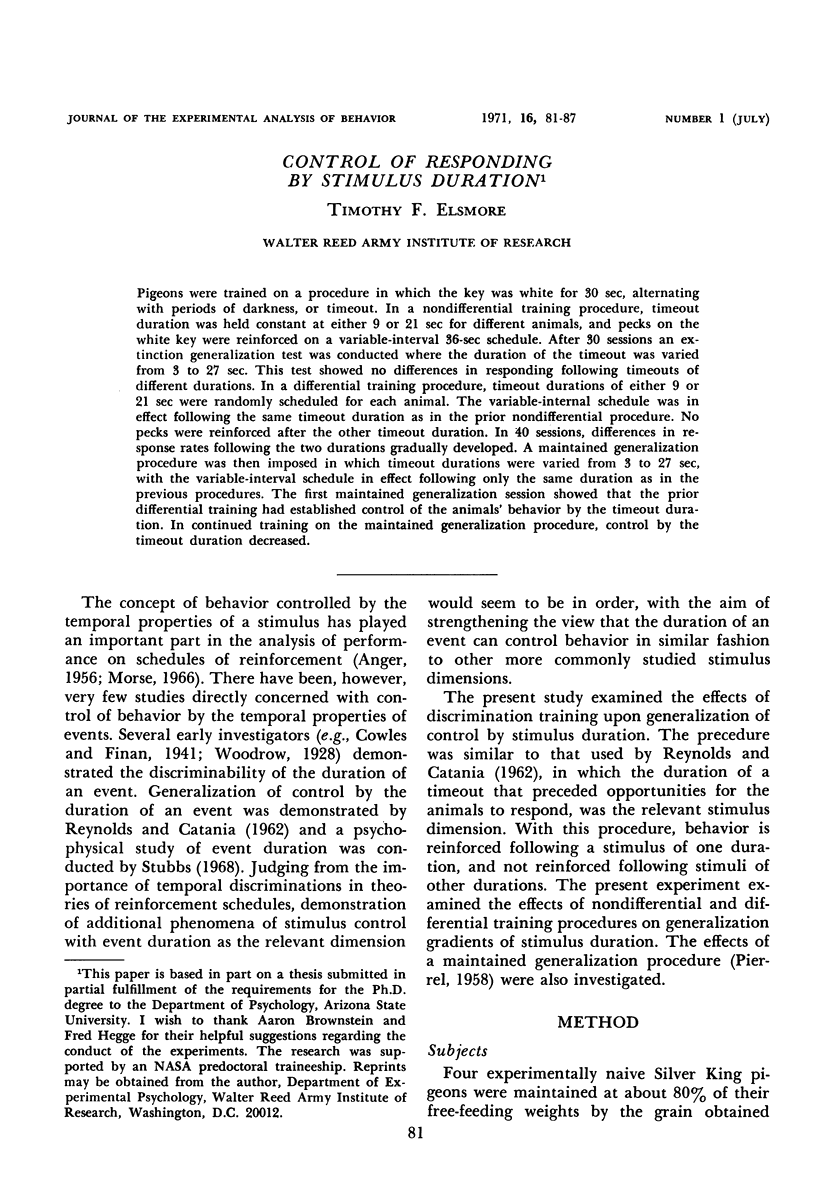
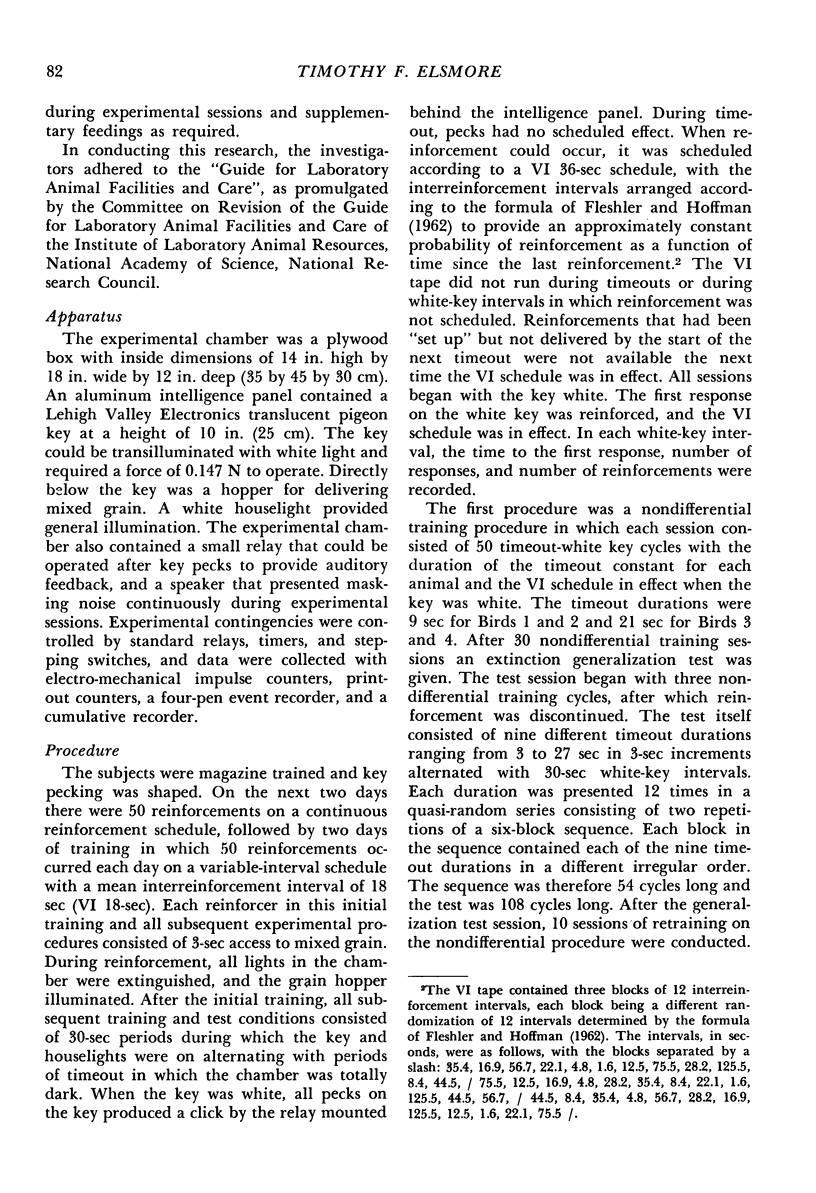
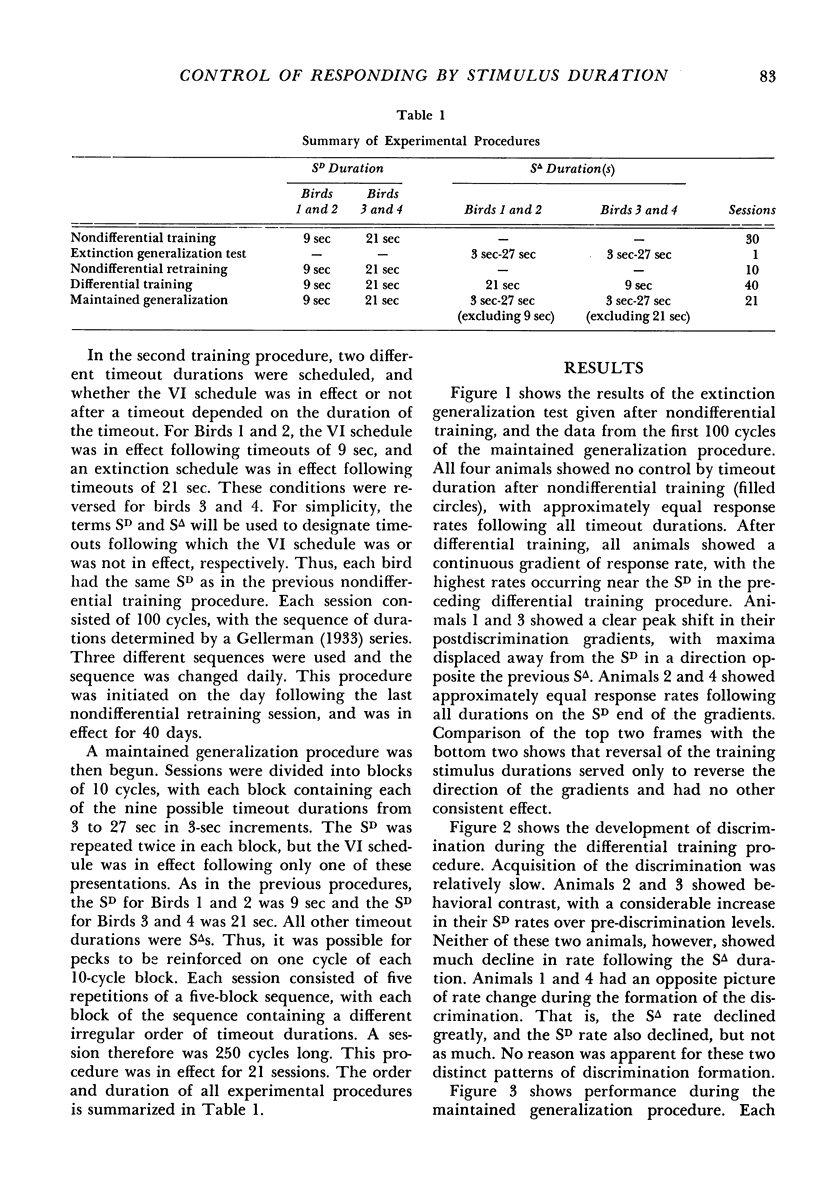
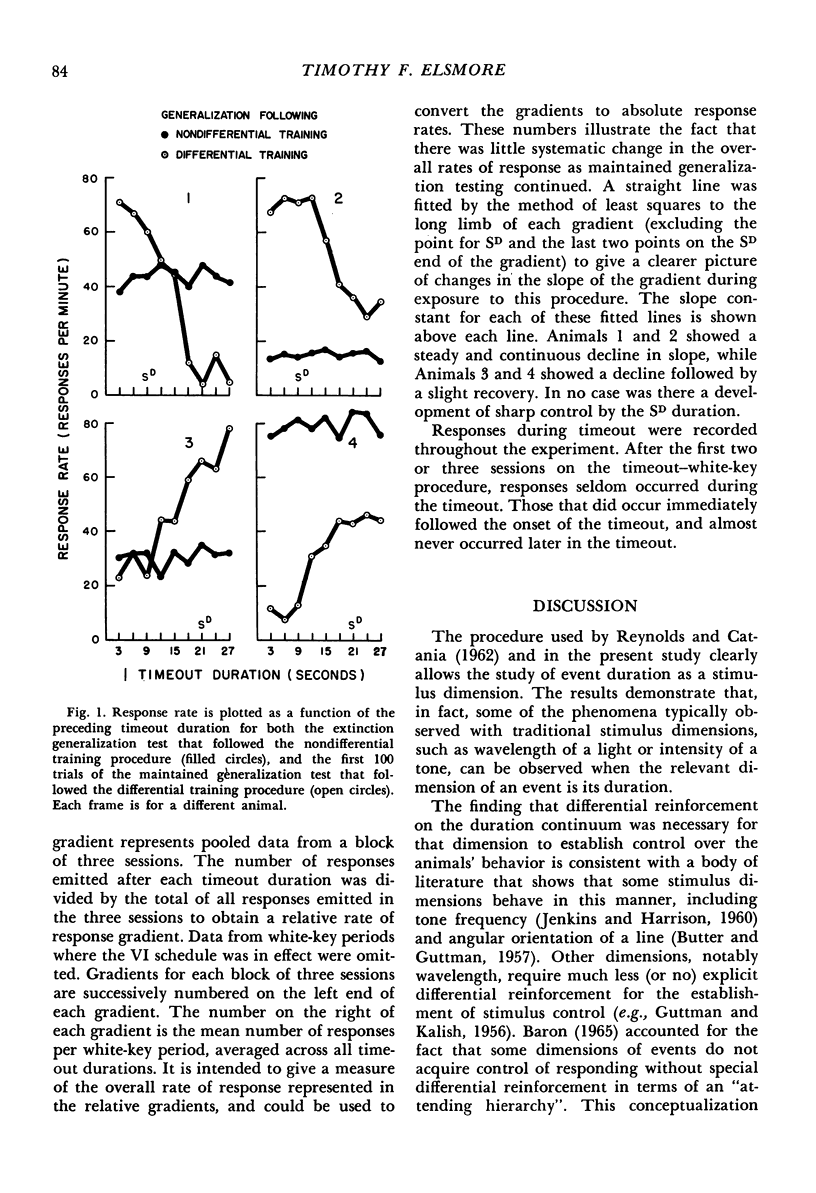
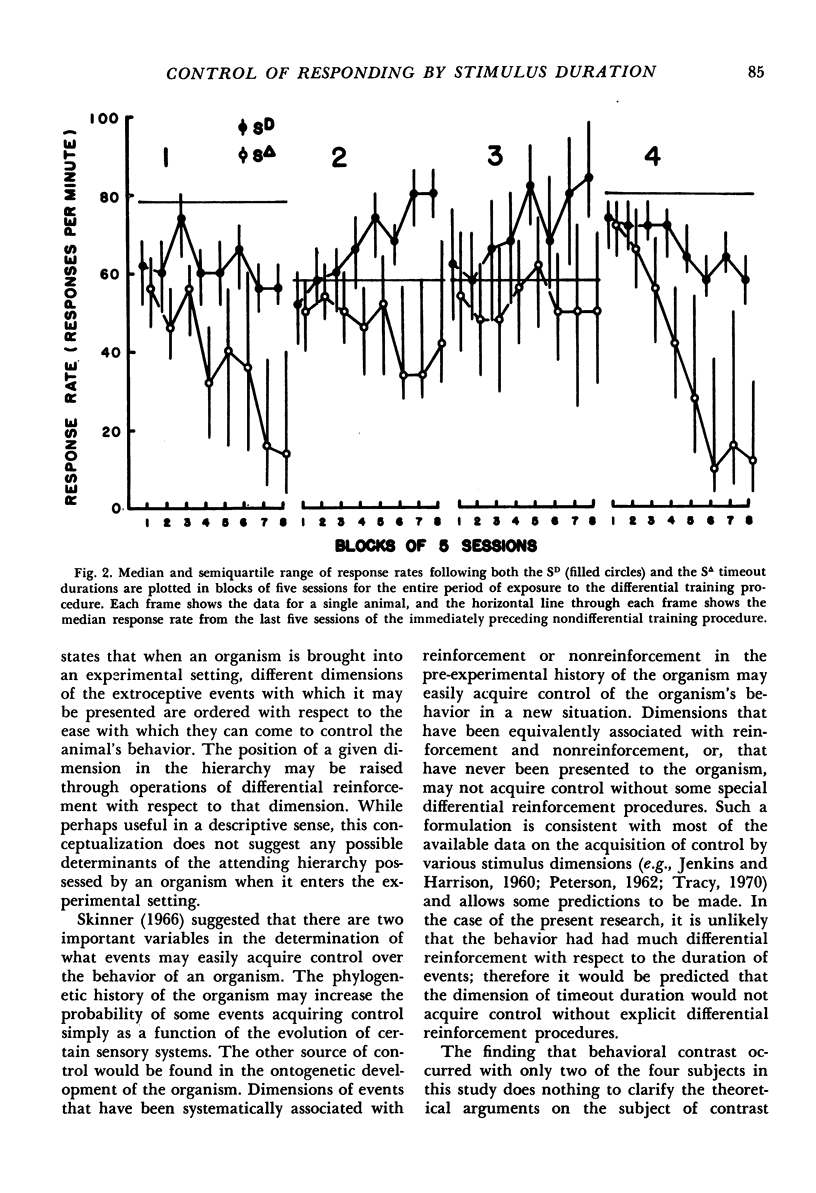
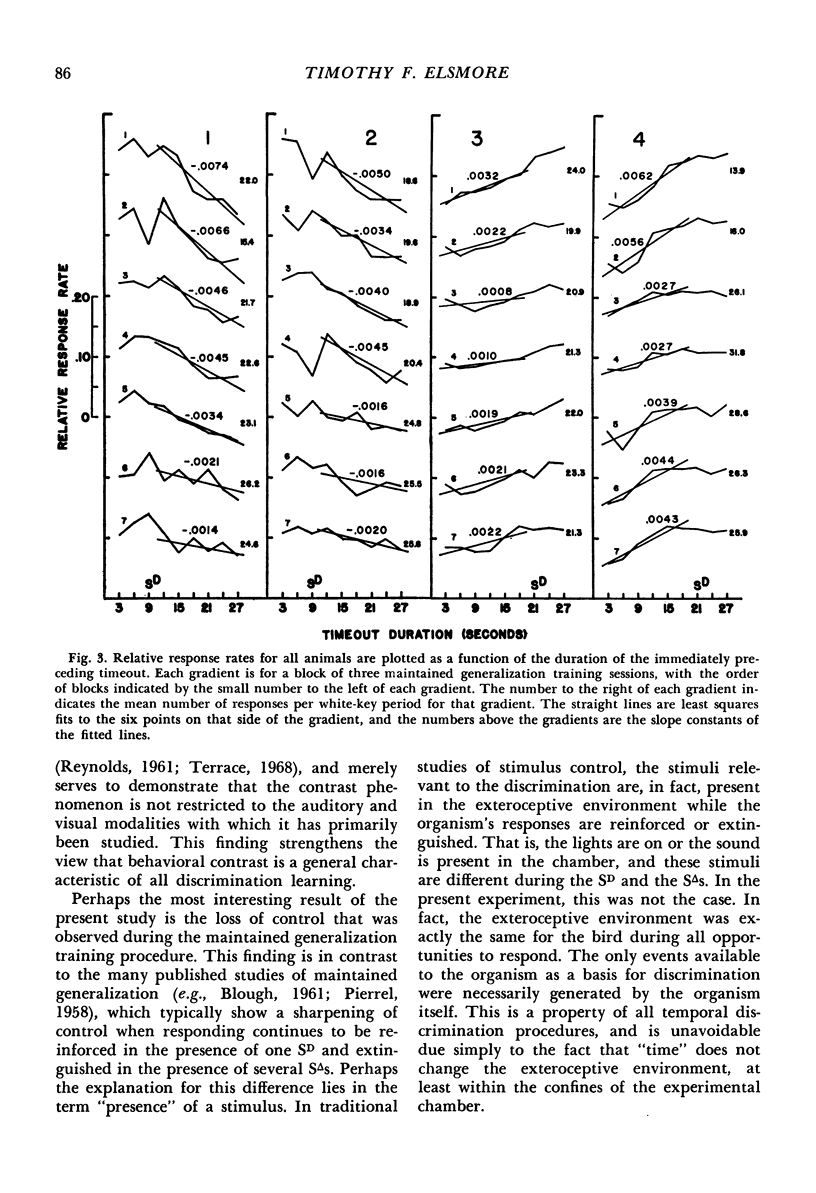
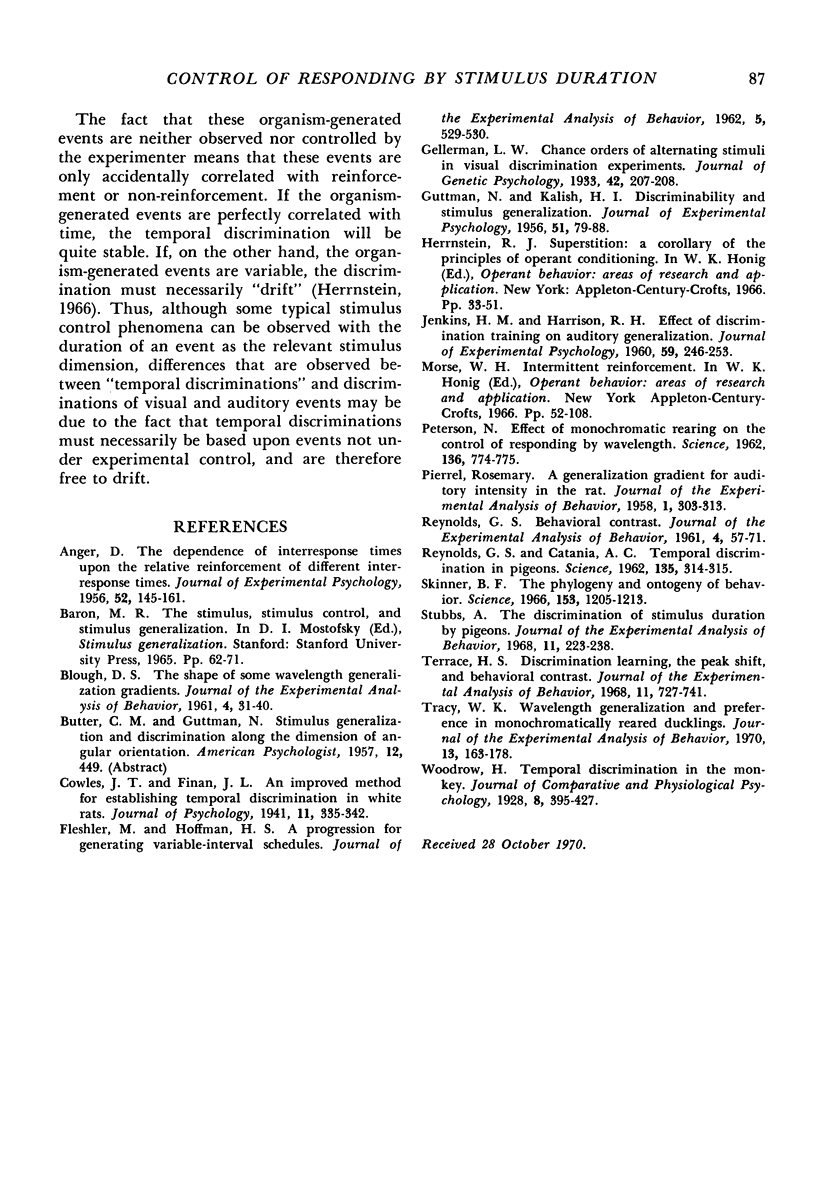
Selected References
These references are in PubMed. This may not be the complete list of references from this article.
- ANGER D. The dependence of interresponse times upon the relative reinforcement of different interresponse times. J Exp Psychol. 1956 Sep;52(3):145–161. doi: 10.1037/h0041255. [DOI] [PubMed] [Google Scholar]
- Blough D. S. The shape of some wavelength generalization gradients. J Exp Anal Behav. 1961 Jan;4(1):31–40. doi: 10.1901/jeab.1961.4-31. [DOI] [PMC free article] [PubMed] [Google Scholar]
- FLESHLER M., HOFFMAN H. S. A progression for generating variable-interval schedules. J Exp Anal Behav. 1962 Oct;5:529–530. doi: 10.1901/jeab.1962.5-529. [DOI] [PMC free article] [PubMed] [Google Scholar]
- GUTTMAN N., KALISH H. I. Discriminability and stimulus generalization. J Exp Psychol. 1956 Jan;51(1):79–88. doi: 10.1037/h0046219. [DOI] [PubMed] [Google Scholar]
- JENKINS H. M., HARRISON R. H. Effect of discrimination training on auditory generalization. J Exp Psychol. 1960 Apr;59:246–253. doi: 10.1037/h0041661. [DOI] [PubMed] [Google Scholar]
- PETERSON N. Effect of monochromatic rearing on the control of responding by wavelength. Science. 1962 Jun 1;136(3518):774–775. doi: 10.1126/science.136.3518.774. [DOI] [PubMed] [Google Scholar]
- Pierrel R. A generalization gradient for auditory intensity in the rat. J Exp Anal Behav. 1958 Oct;1(4):303–313. doi: 10.1901/jeab.1958.1-303. [DOI] [PMC free article] [PubMed] [Google Scholar]
- REYNOLDS G. S. Behavioral contrast. J Exp Anal Behav. 1961 Jan;4:57–71. doi: 10.1901/jeab.1961.4-57. [DOI] [PMC free article] [PubMed] [Google Scholar]
- REYNOLDS G. S., CATANIA A. C. Temporal discrimination in pigeons. Science. 1962 Jan 26;135(3500):314–315. doi: 10.1126/science.135.3500.314. [DOI] [PubMed] [Google Scholar]
- Skinner B. F. The phylogeny and ontogeny of behavior. Contingencies of reinforcement throw light on contingencies of survival in the evolution of behavior. Science. 1966 Sep 9;153(3741):1205–1213. doi: 10.1126/science.153.3741.1205. [DOI] [PubMed] [Google Scholar]
- Stubbs A. The discrimination of stimulus duration by pigeons. J Exp Anal Behav. 1968 May;11(3):223–238. doi: 10.1901/jeab.1968.11-223. [DOI] [PMC free article] [PubMed] [Google Scholar]
- Terrace H. S. Discrimination learning, the peak shift, and behavioral contrast. J Exp Anal Behav. 1968 Nov;11(6):727–741. doi: 10.1901/jeab.1968.11-727. [DOI] [PMC free article] [PubMed] [Google Scholar]
- Tracy W. K. Wavelength generalization and preference in monochromatically reared ducklings. J Exp Anal Behav. 1970 Mar;13(2):163–178. doi: 10.1901/jeab.1970.13-163. [DOI] [PMC free article] [PubMed] [Google Scholar]


